Communication Before Escalation
Transcript
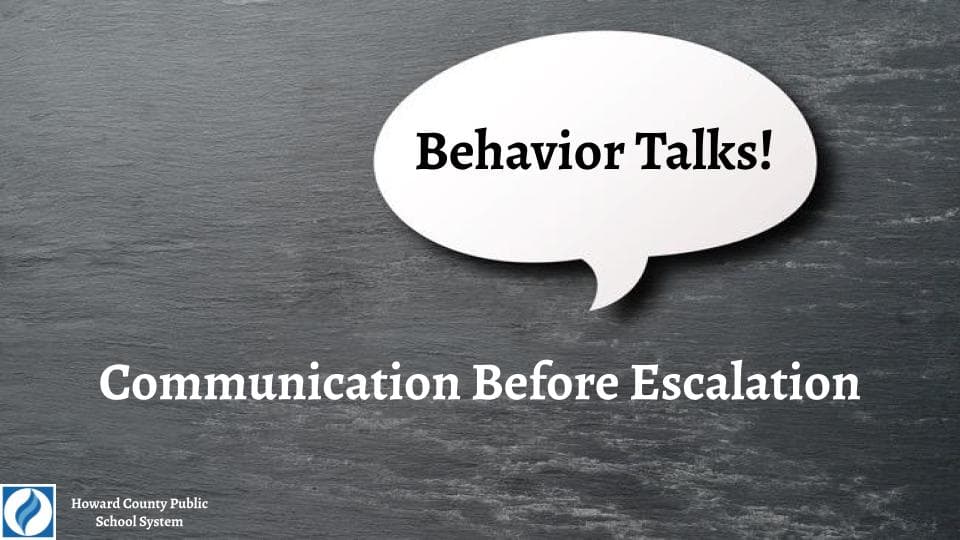
Behavior Talks: Communication Before Escalation
Welcome to Behavior Talks – Communication Before Escalation.
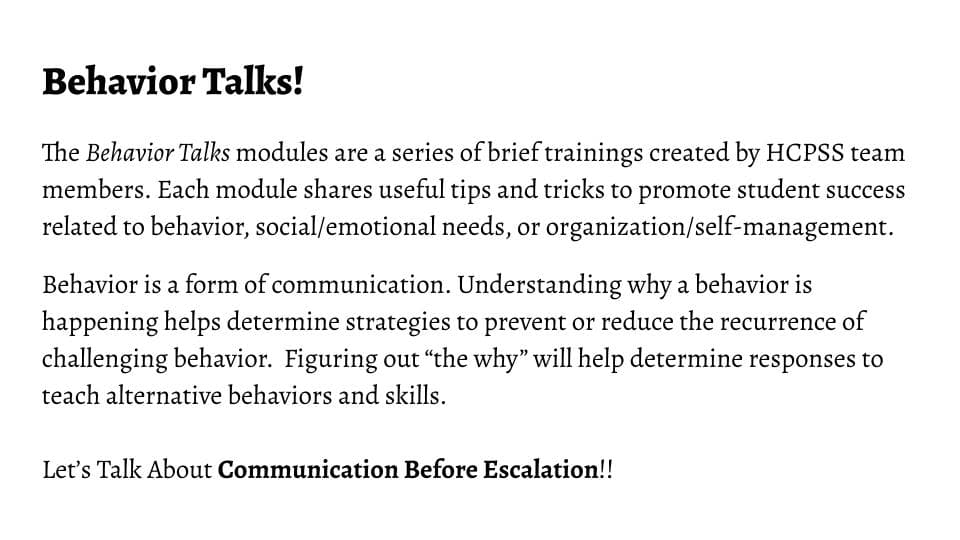
About Behavior Talks
The Behavior Talks modules are a series of brief trainings created by HCPSS team members. Each module shares useful tips and tricks to promote student success related to behavior, social/emotional needs, or organization/self-management.
Behavior is a form of communication. Understanding why a behavior is happening helps determine strategies to prevent or reduce the recurrence of challenging behavior. Figuring out “the why” will help determine responses to teach alternative behaviors and skills.
Let’s talk about Encouraging Communication before escalation.
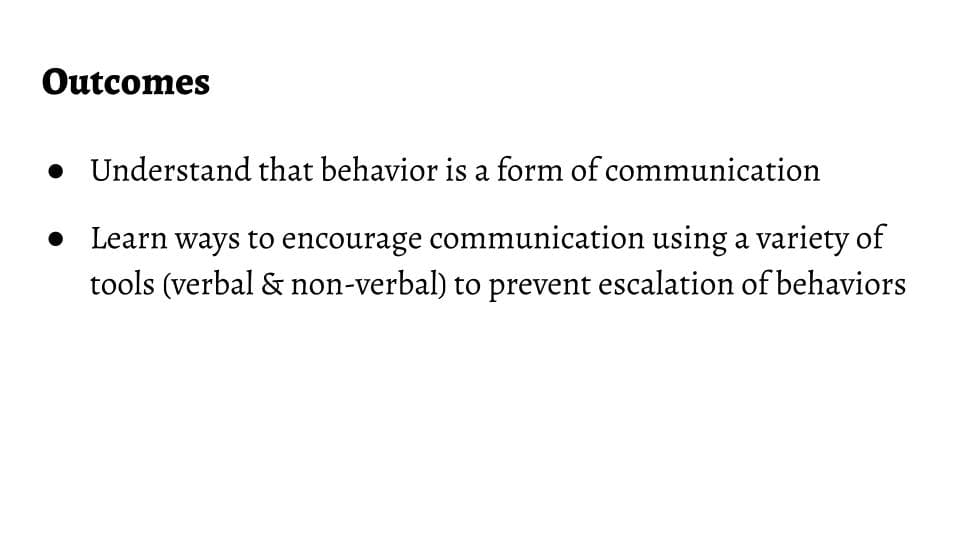
Outcomes
By the end of this module, we want you to understand that behavior is a form of communication and to learn ways to encourage your student to communicate effectively using a variety of tools.
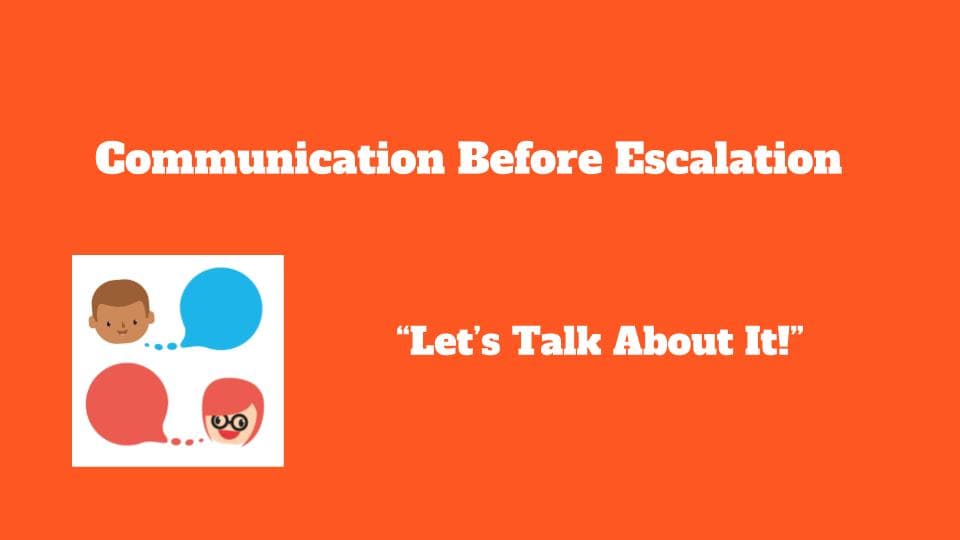
Communication Before Escalation-Let's Talk About It
We always want to encourage communication, but how do we Encourage Communication when your student is upset? Let’s talk about it!
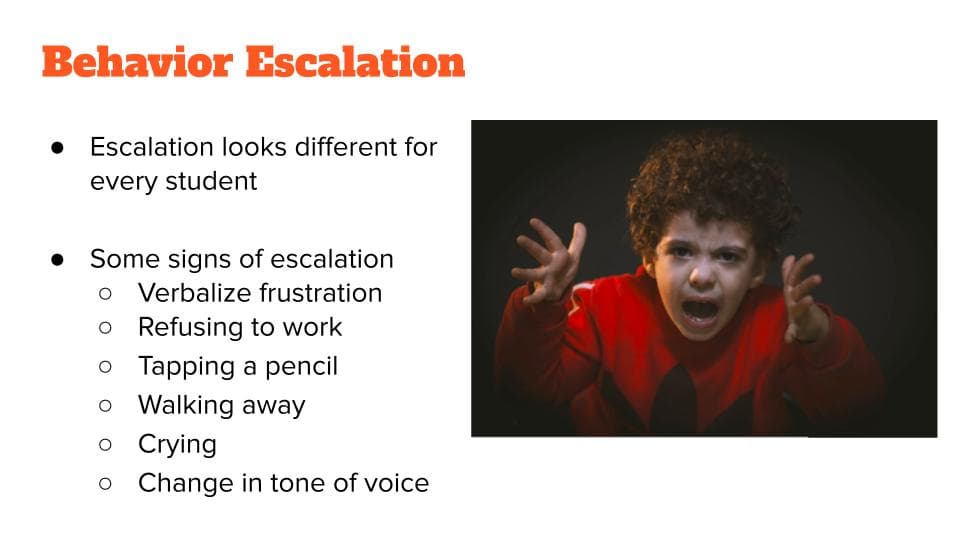
Behavior Escalation
Behavior escalation may look different for each student. There may be times when you are working with your student at home and you notice a change in their behavior. They may put their head down, refuse to complete a task, or walk away. In addition, the student may cry, or their tone of voice may change. Think about changes in behavior that you might see in your student.
When these behaviors occur, you should encourage your student to communicate their wants and/or needs by using verbal or non-verbal language. By encouraging communication, you are teaching your student how to appropriately ask for help, ask for a break, or express their needs.
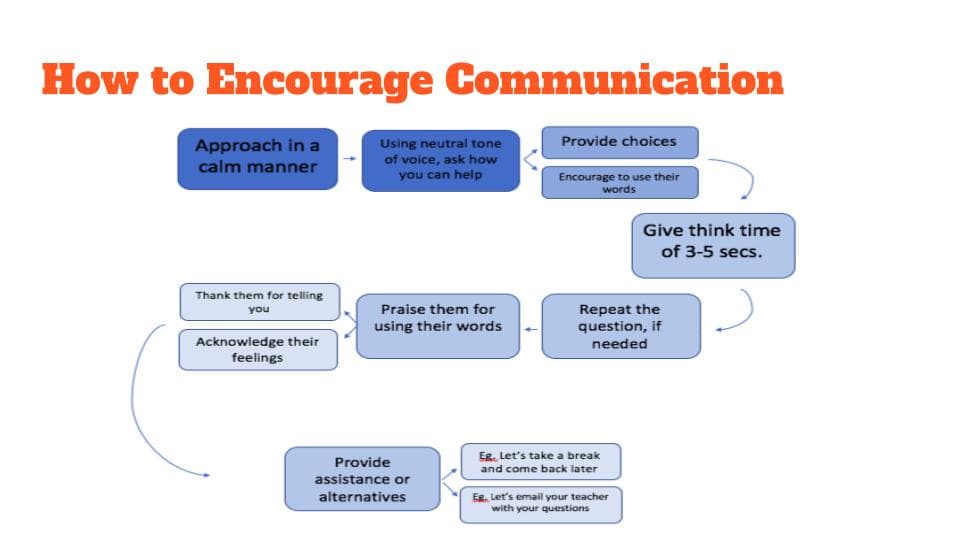
How to Encourage Communication
Let’s talk about how to encourage communication before escalation.
Start off by approaching your student in a calm manner. Using a neutral tone of voice, ask your student, “How can I help you?” You can encourage your student to respond by using their words in any form of communication such as, pictures, a device, or verbally. You can also provide a couple of choices if your student cannot come up with the words to tell you. For example, “Do you need help with this problem or do you need a break?” After asking how you can help your student, give them time to think about what question was asked. Consider giving them 3-5 seconds. Then, if needed, you can repeat the question. After your student responds, praise them for using their words. You may respond by saying “thank you for telling me you’re upset” and/or by acknowledging your students feelings. If needed, provide assistance or alternatives. For example, “Let’s take a break and come back to this later” or, “Let’s email your teacher with your questions”.
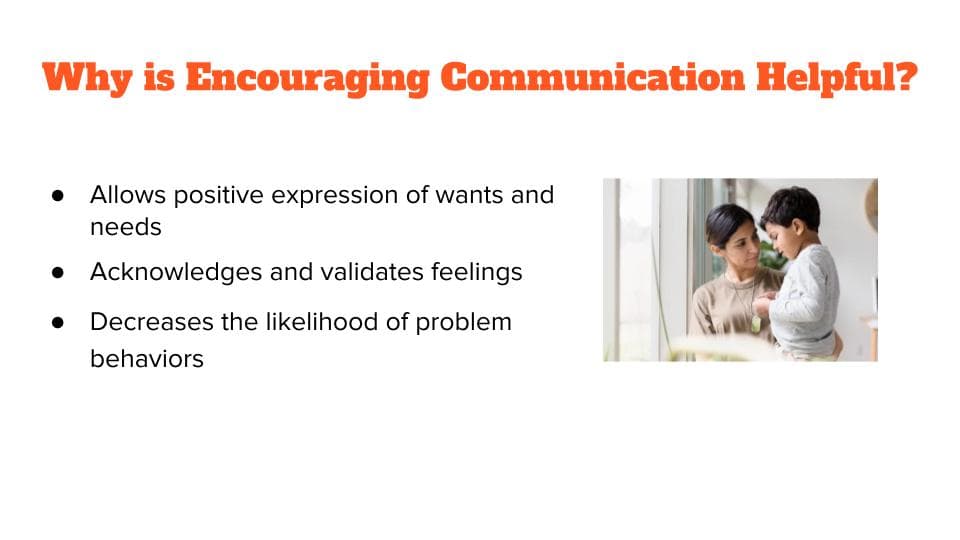
Why is Encouraging Communication Helpful?
Encouraging communication before escalation is helpful because communication is powerful. We want students to express their wants and needs in a positive way. Effective communication makes it easier for students to get their needs met. It also provides caregivers the opportunity to support and validate their students. Over time, as communication becomes more effective the likelihood of behavior escalation should decrease.
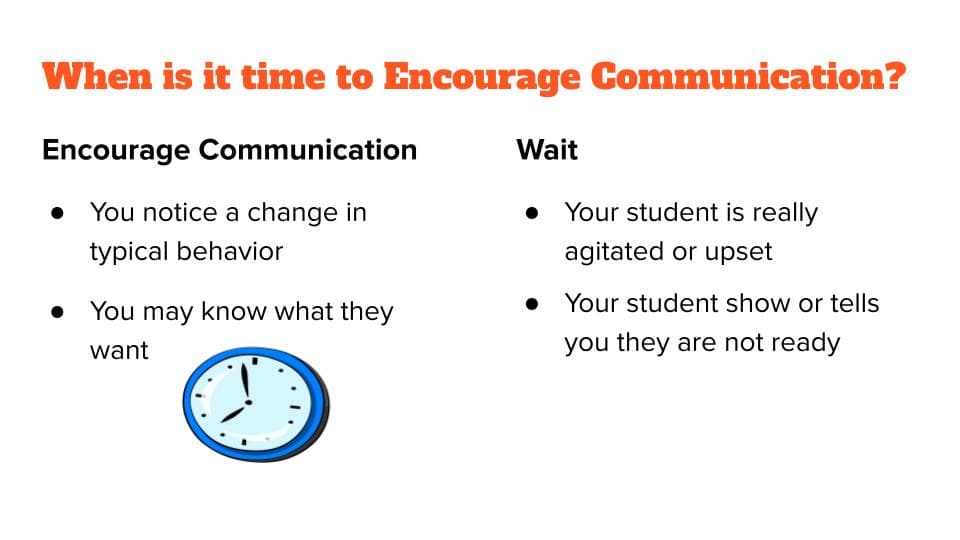
When is it Time to Encourage Communication?
You can encourage your students to communicate when you start to notice a change in typical behavior. You can also prompt communication with your student when you know, or have a pretty good idea, of what they want! You should wait to prompt your student to communicate when they are really agitated or upset. There are also times when your student may show you or tell you that they just aren’t ready to communicatie yet. That is ok! It is sometimes better to wait so that the situation doesn’t further escalate.
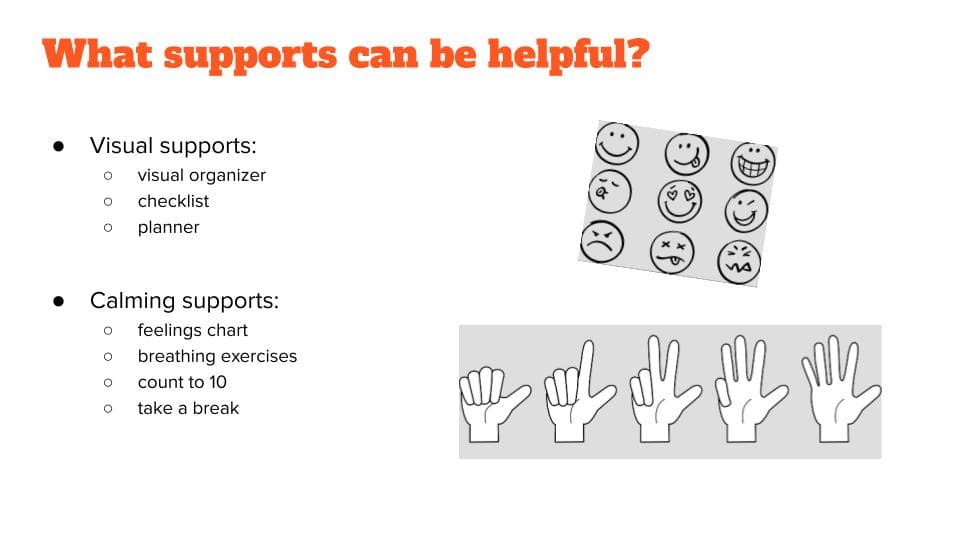
What Supports Can Be Helpful?
Consider using visual supports to make communication less challenging. Instead of making your student speak verbally, use visual supports to help make communication easier. Students may benefit from a visual organizer, a checklist or a planner to help provide structure to an activity. By referring back to a visual, the student may be able to better communicate their issue.
Calming supports may also be needed to prevent escalation of behavior. You can have your student point or gesture to a picture to indicate how they are feeling. Other calming strategies that may be helpful include taking deep breaths, counting to 10, or taking a break.
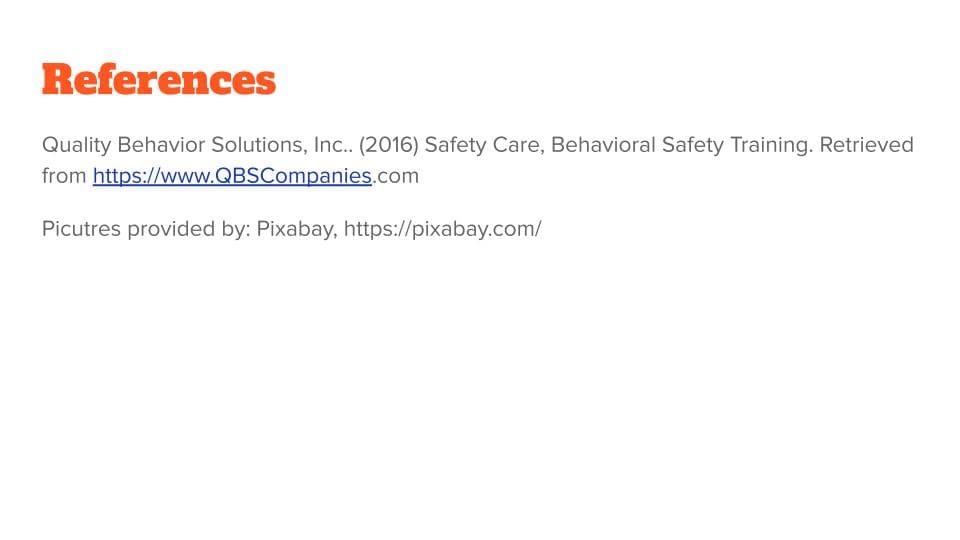
References
References for this presentation. Quality Behavior Solutions was used as a reference for how to use communication effectively to de-escalate a situation in which problem behavior is beginning to surface. PIctures provided by Pixabay.
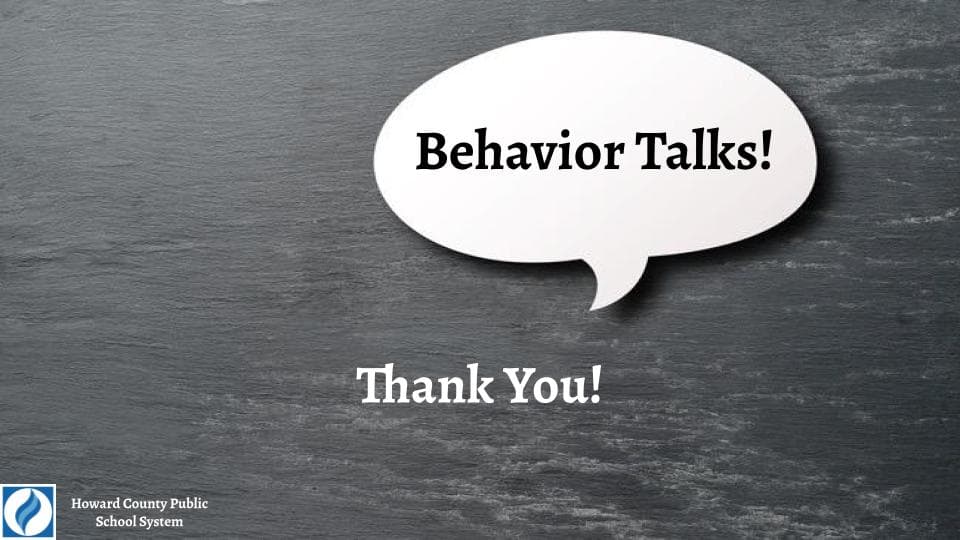
Thank You!
Thank you for watching! We hope that you found this video helpful. For additional resources please visit the Behavior Talks additional resources page.